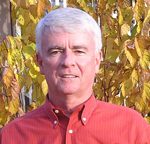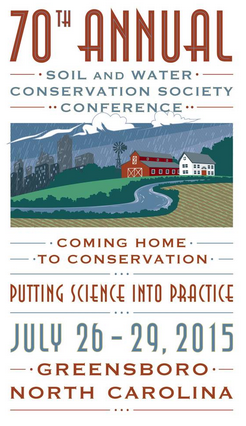This week I am pleased to have as my guest writer, Jim Gulliford, Executive Director of the Soil and Water Conservation Society (SWCS). SWCS is a professional society dedicated to promoting the science and art of natural resource conservation and has been a leader in encouraging the adoption of precision conservation.
Jim has more than 30 years professional experience administering natural resource protection programs in agriculture and for the Environmental Protection Agency. I first met Jim back in the early 1980’s when I was a young NRCS employee. At that time, Jim was the Director of Iowa’s Department of Soil Conservation.
In 2005, SWCS published a special section entitled “Precision Conservation in North America” in their Journal of Soil and Water Conservation. For those of you that haven’t seen this issue, it is a great read. I was pleased when SWCS announced that it would designate Precision Conservation as a topic for the 2015 SWCS Annual Conference and asked Jim to share his views.

Why Not Precision Conservation?
Farmers are using more and more sophisticated tools to refine and improve their crop management decisions, and to evaluate both yield and economic results. Precision agriculture equipment and software applications support auto-steer technology, seed selection and plant population rates, variable rate application of fertilizer, integrated pest management, yield measurement, and the post-harvest economic evaluation of all of these decisions.
The same concepts and technologies apply to the challenges farmers face as they protect their soil from erosion, restore soil health, and protect water quality. Using precision agriculture tools for conservation purposes – precision conservation – can enable the farmer to make informed decisions to achieve conservation objectives as well.
The information available to farmers from years of yield monitor data and farm input costs allow the farmer to evaluate economic performance within the field rather than at historic whole-field scales. We know that variability of soils, slopes, drainage and other factors within fields affects both yield and profitability. It is possible – no, likely – that field conditions under the best input management decisions may result in easily identifiable areas within fields that are not profitable under any Ag management scenario.
Some would argue that it is easier to farm through these areas than to convert them to alternate uses. But precision agriculture equipment and software can identify geographic areas within the field where seed, fertilizer and pesticide applications can be stopped automatically. Why spend money to lose money each year? Wouldn’t it more profitable to consider alternative uses for those areas?
The same precision agriculture capabilities can be used to restore and maintain waterways that have been lost to the convenience of whole field agricultural practices. Ephemeral gullies need the erosion protection waterways can provide. It makes no sense to re-grade good topsoil into ephemeral gully channels to repair them, only to see the same problem emerge again the next year. With precision agriculture/conservation capabilities, grass waterways can become an effective conservation practice rather than an in-field inconvenience.
 We often speak of win-win opportunities where conservation goals are compatible with crop production objectives. Precision conservation applications of precision agriculture technology can achieve farmers’ sustainability objectives of productivity, return on investment, soil conservation, and water quality protection.
We often speak of win-win opportunities where conservation goals are compatible with crop production objectives. Precision conservation applications of precision agriculture technology can achieve farmers’ sustainability objectives of productivity, return on investment, soil conservation, and water quality protection.
This year’s Annual Conference of the Soil and Water Conservation Society will feature the opportunities for precision conservation to address important conservation and environmental challenges in agriculture. Join us July 27-29, 2015, in Greensboro, North Carolina.

As a climatologist, I know from the work of my colleagues that the wet springs are not going to stop anytime soon. It’s always possible to have a single dry spring, but the number of these will be less over the next decade or two compared to the 1960s, 1970s, and 1980s.
I hear at least one story at every grower meeting I attend about heavy rainfall washing out tiers or causing excessive erosion even along waterways.
I recommend using precision conservation and developing plans that fortify structures somewhat beyond technical standards.
Another conversation I have with growers is how to remain profitable when it rains so much. My message has been to consider not just the yield on those acres but the profit margin. It might turn out that rather than focusing on maximum yield and market price a grower would be more profitable by putting highly unprofitable into conservation.
Chris, I agree the change in weather patterns is providing one additional challenge to farmers. Soil conservation/soil health and water management will continue to increase in importance.
Hi, Now-a-days, farmers are uses sophisticated instruments to increase crop production, produced quality and economic returns. Monitoring of soil health instruments are included in the Precision agriculture as it is important for the soil health and consequently effect on plant health. Maintaining balanced plant nutrition in the soil as well as plant system is require to achieve maximum crop production and quality. Healthy plants have higher vigor, less infestation of pest and diseases and hence more crop production and quality. Thanks,Pravin, pcpatel_2011@yahoo.in